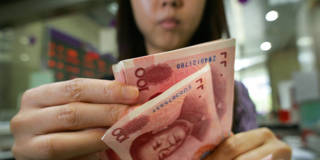While China has made great strides in internationalizing its currency, the goal of dethroning the US dollar is still far off. To undermine the dollar’s dominance in cross-border trade, China must loosen capital controls and make the renminbi more attractive to international investors.
NEW YORK – After years of speculation and false starts, it seems that the internationalization of the renminbi is well underway. On March 29, China and Brazil announced plans to trade using their own currencies, rather than the US dollar. The day before, the China National Offshore Oil Corporation and France’s TotalEnergies completed their first-ever renminbi-denominated liquefied natural gas trade. Russian President Vladimir Putin recently said that he wants to use the Chinese currency not just for trading with China but also as a form of payment in trade with other countries in Asia, Africa, and Latin America. And Saudi Arabia has been in talks with China since last year about accepting payments for some oil exports in renminbi.

NEW YORK – After years of speculation and false starts, it seems that the internationalization of the renminbi is well underway. On March 29, China and Brazil announced plans to trade using their own currencies, rather than the US dollar. The day before, the China National Offshore Oil Corporation and France’s TotalEnergies completed their first-ever renminbi-denominated liquefied natural gas trade. Russian President Vladimir Putin recently said that he wants to use the Chinese currency not just for trading with China but also as a form of payment in trade with other countries in Asia, Africa, and Latin America. And Saudi Arabia has been in talks with China since last year about accepting payments for some oil exports in renminbi.